From Sidelines to Seams: The Art of Turf Installation
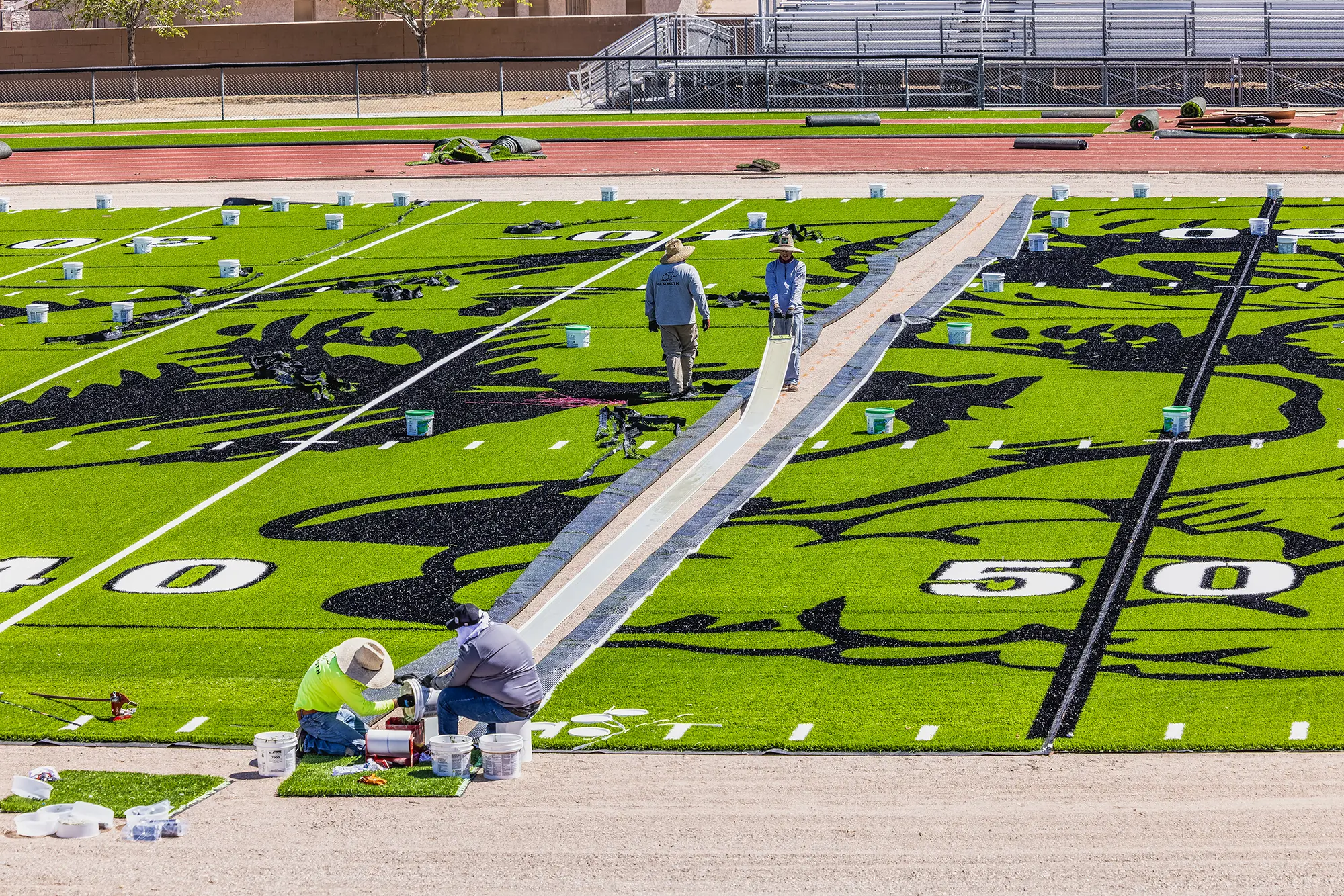
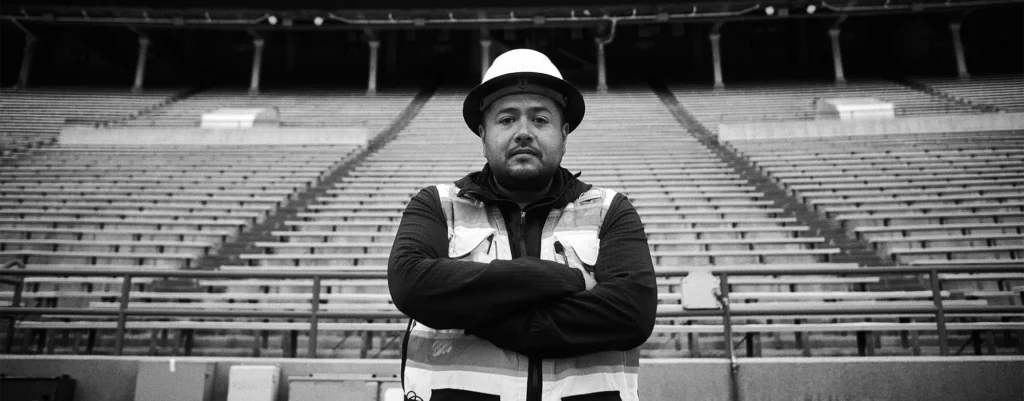
How Turf Installation Can Impact Athlete Performance
Football is a game of inches, and the smallest distance can cost you. Imagine you’re a linebacker playing in a championship game. You fail to stop the game-winning touchdown when the receiver barely reaches the end zone. After the game, you learn that the endzone was three inches longer than the other one. You lost the game because of a few inches that were out of your control. It had nothing to do with your team’s performance, your talent, or even the weather. It was the field.
Turf installation is not like rolling out a carpet. There is no one-size-fits-all process for installing it. When clients talk to MMTH about selecting the right turf, they think they are just asking for a sharp-looking field that is easy to maintain and available year-round. But we also help them think through their field’s playing style: how fast or slow they want the ball to roll, how much bounce they want, and so on. They’re selecting a field system based on sport—baseball turf is different than football and soccer. They’re selecting a specially designed system to complement the way their coaches want to play. There are dozens of components that go into creating the perfect field.
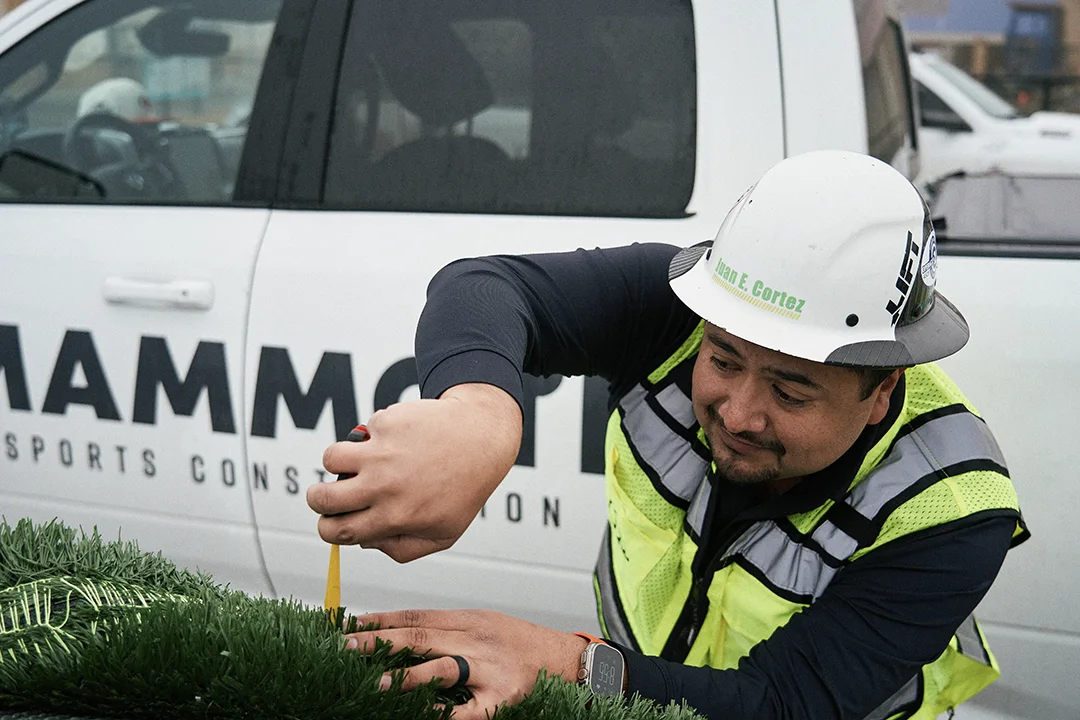
Most people don’t know that the types of turf matter for the environment you’re playing in. That’s why we recommend different turf and infill for different parts of the country. A field baking in the Arizona sun will have a different make up than one that stands against South Dakota winters. At MMTH we’re sports specialists. We help you navigate these decisions by asking questions you didn’t even know to ask.
Incorrectly installed turf can impact gameplay, or worse, cause injury. If any seam fails, this can develop a void between the lines to create a trip hazard. And just like running on uneven natural grass, this creates more opportunities for athletes to fall. Athletes should be locked in and focused on their game, not worried about field conditions.
Poor quality fields could ruin someone’s career. If an installation is off by an inch on one end of the field, you could easily be off by a foot by the time the crew gets to the other end. It’s not always easy. But our attention to detail matters in the long run. If an athlete is going to go onto the field and give it their all, my crews and I must do the same.
At MMTH, our crews are in charge of turf installation on every single field. What we do requires precision, accuracy, and focus.
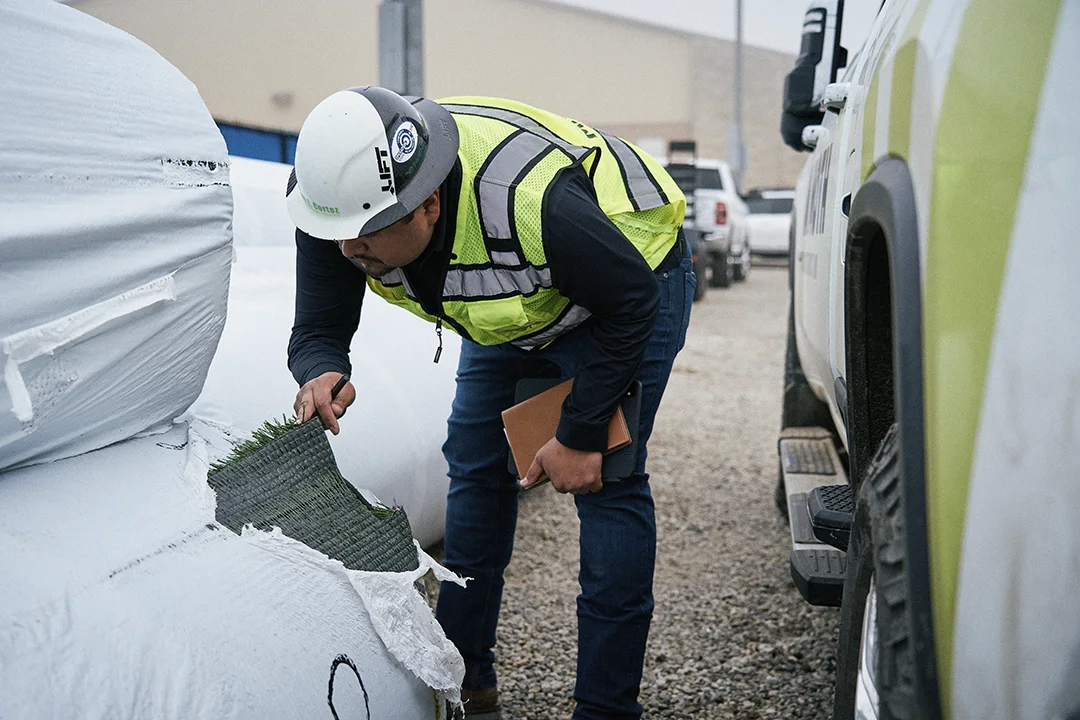
Before we start the installation process, MMTH civil engineers will determine how to grade our sites and allow water to drain. They’ll make sure it’s safe to build. After that, our civil construction team comes in. Using their laser equipment, they level the site to perfection within a centimeter. Once the field has been turned over to meet our highest expectations, my crew steps up to the line.
Our process varies depending on the size and type of field, but we’ll use football as an example. We always start by inspecting the turf product to make sure the quantity, colors, and fibers are correct. We’ll start the installation process with the main body of the field and go from one goal post to the other. We use stringlines to make sure the field is level. We use stringlines and steel tape to pull measurements and verify field centers. We then roll out the panels, make sure they are straight, then seam them together, making sure these lines are perfect to the very inch. Once we complete the main field, we will cut and seam the sidelines. Then we install the goal line, the 5-yard line, the 10-yard line, the 15-yard line and so on. We give each section the same attention to detail and precision every time.
After all of that, we start working on the hash marks, the numbers, and the logos. Typically, our team will use stencils to install hash marks and numbers out of the field. We’ll remove the green turf and add in the white hashmarks and numbers into those spaces.
With new turf innovations from our friends at Shaw Sports Turf, we are also using Game On technology to great success. Game On technology provides marks, lines, numbers, and logos already tufted in on a single run, which limits the number of seams and cuts in your field. It can help reduce installation time and increase field consistency, while also adding artwork options on the field.
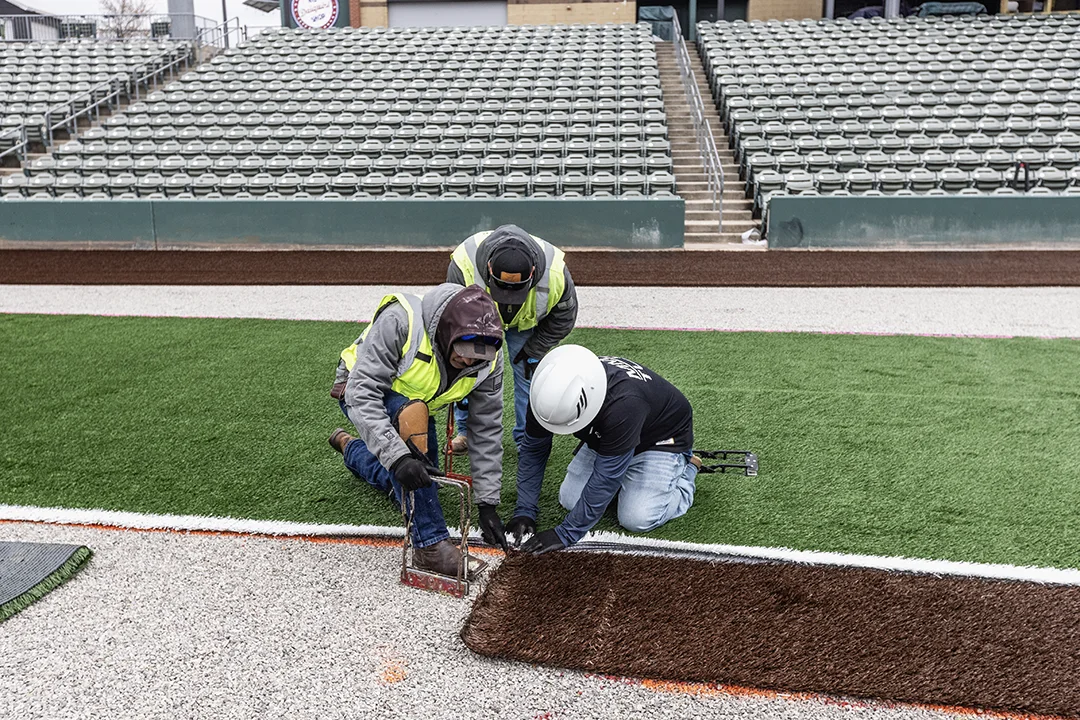
Our last step is to apply infill. Infill is what gives turf its dimension. Prior to infill being installed, the fibers on the turf will lay flat. Depending on what infill product we are using, it essentially means spreading sand and rubber across the turf. We use equipment with turf tires to distribute the infill to avoid displacing it. Once the infill has been placed on the turf, we have final walk throughs and inspection before handing it over to the client.

The field is just as important to the game as the ball, the equipment, and the athlete’s performance. The lines need to be straight, none of the markings can be missing, and the infill must be distributed evenly to provide a consistent playing surface. It’s the attention to these details that makes our installation crews the best in the industry.
We’re turf specialists backed by the best workmanship warranty in the industry. That’s how much we stand behind our installations. We’re fast, efficient, and good at what we do. I have been doing this for 20 years and some of my guys have been doing it even longer. Between us, we’ve built hundreds of fields around the country. We know everything there is to know about turf.
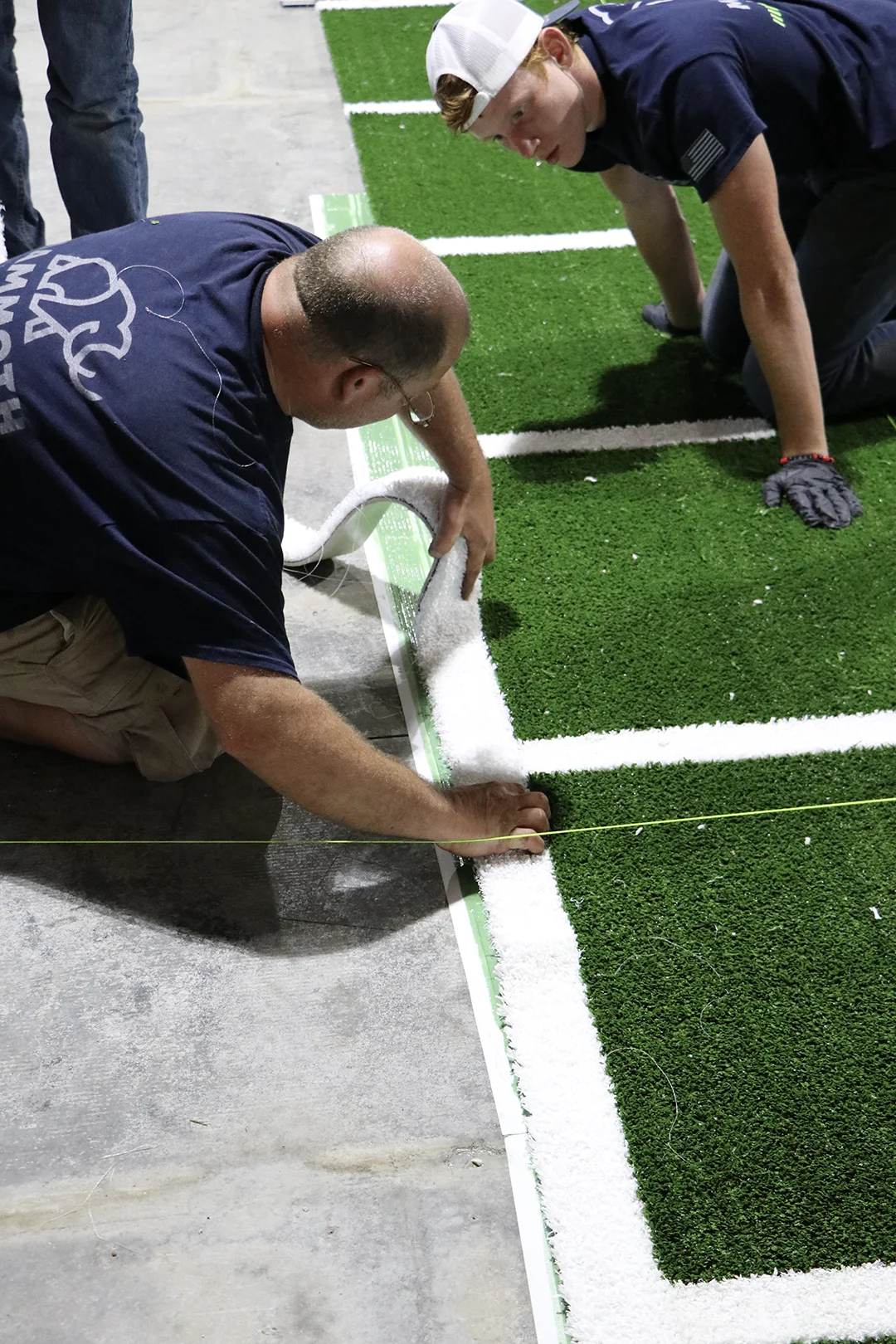
We take a lot of pride in our work, and that pride shows up in every aspect—not just the final product. It’s obvious from the fact that we have the cleanest job sites in the industry. We give every field the same amount of care and attention to detail. It doesn’t matter if it’s a high school in rural Kansas or an NFL stadium in Detroit. Our lines are always perfectly straight, measured to the inch, and remeasured. The level of detail just comes naturally to us.
Inches make a difference to athletes, so they are important to us, too.